 Last week we discussed a couple of live fire drills that offer a good practice regimen. This week let’s look at some exercises that you can do at home.
Last week we discussed a couple of live fire drills that offer a good practice regimen. This week let’s look at some exercises that you can do at home.
 Dry-fire practice should be much more than just pressing a trigger and having a hammer or striker fall on an empty chamber or dummy round. It gives us an opportunity to perfect the many aspects of shooting that don’t require the noise and recoil of live fire. But before you start a dry-fire practice session here are a few rules that you MUST ALWAYS follow so that your practice time is safe.
Dry-fire practice should be much more than just pressing a trigger and having a hammer or striker fall on an empty chamber or dummy round. It gives us an opportunity to perfect the many aspects of shooting that don’t require the noise and recoil of live fire. But before you start a dry-fire practice session here are a few rules that you MUST ALWAYS follow so that your practice time is safe.
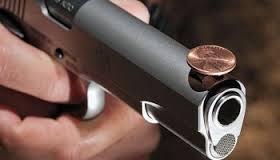 First, be absolutely sure you gun is empty. Check the chamber and all magazines or speed loaders, then recheck everything a second and even a third time. There should never be any live ammunition in the room where you dry-fire practice. The area where you practice should have a very solid backstop. A basement with concrete walls is an ideal location for dry-fire exercises.
First, be absolutely sure you gun is empty. Check the chamber and all magazines or speed loaders, then recheck everything a second and even a third time. There should never be any live ammunition in the room where you dry-fire practice. The area where you practice should have a very solid backstop. A basement with concrete walls is an ideal location for dry-fire exercises.
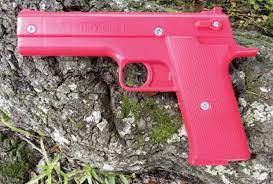 The main reason we want to dry-fire practice is the building of motor skills. Often we hear motor skills referred to as “muscle memory.” Let me make this perfectly clear, muscles are dumb! They have no memory whatsoever; if muscles had memory, we would only have to perform a task correctly one time. Our golf swing would be perfect every time, as would our bowling stroke or typing with speed and without error. Few of us have the natural ability to do every physical task well and without repetitive practice. It is the repetitive practice that builds the motor skills we need to perform and without practice those hard earned motor skills will deteriorate. Regular practice is a must.
The main reason we want to dry-fire practice is the building of motor skills. Often we hear motor skills referred to as “muscle memory.” Let me make this perfectly clear, muscles are dumb! They have no memory whatsoever; if muscles had memory, we would only have to perform a task correctly one time. Our golf swing would be perfect every time, as would our bowling stroke or typing with speed and without error. Few of us have the natural ability to do every physical task well and without repetitive practice. It is the repetitive practice that builds the motor skills we need to perform and without practice those hard earned motor skills will deteriorate. Regular practice is a must.
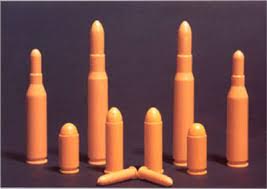 Now that we have a safe room and backstop for our dry-fire practice, here are a few exercises that will us perfect our shooting skills. A couple of handy items that will help you are dummy (snap cap) cartridges, a good holster and belt, extra magazines or speed loaders, and perhaps a laser sighting device that can be attached to your gun.
Now that we have a safe room and backstop for our dry-fire practice, here are a few exercises that will us perfect our shooting skills. A couple of handy items that will help you are dummy (snap cap) cartridges, a good holster and belt, extra magazines or speed loaders, and perhaps a laser sighting device that can be attached to your gun.
 Loading and unloading your gun is very important. You need to learn the proper techniques for arming your gun. If you have a semi-auto, practice inserting and releasing magazines; for revolver shooters, mastering the use of speed loaders or moon clips comes only with practice. I suggest you repeat each task at least ten times or more per session.
Loading and unloading your gun is very important. You need to learn the proper techniques for arming your gun. If you have a semi-auto, practice inserting and releasing magazines; for revolver shooters, mastering the use of speed loaders or moon clips comes only with practice. I suggest you repeat each task at least ten times or more per session.
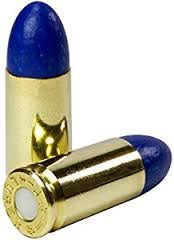 If you are using a long gun, practice mounting it. Close your eyes and mount your gun; when you open your eyes the sights should be perfectly aligned, if not, more practice.
If you are using a long gun, practice mounting it. Close your eyes and mount your gun; when you open your eyes the sights should be perfectly aligned, if not, more practice.
Drawing a handgun involves a series of movements that when properly executed will keep you from accidently shooting yourself or others. While seemingly simple, a safe and correct handgun draw can only be mastered with repetitive practice.
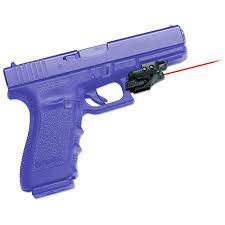 Sight alignment and trigger control (trigger press) are the two most important factors
Sight alignment and trigger control (trigger press) are the two most important factors in accurate shooting. Practice without the noise and recoil of live fire will help you master these skills. A laser sighting device will help you. It will tell you if you are jerking, pushing, or pulling the gun off target. One note of caution, do not dry fire a rimfire gun, doing so may damage the chamber wall causing misfires and even an expensive trip to the gunsmith.
in accurate shooting. Practice without the noise and recoil of live fire will help you master these skills. A laser sighting device will help you. It will tell you if you are jerking, pushing, or pulling the gun off target. One note of caution, do not dry fire a rimfire gun, doing so may damage the chamber wall causing misfires and even an expensive trip to the gunsmith.
When you have finished your dry-fire practice, put your gun in a safe place. Do not reload you gun for at least 30 minutes. After many repetitions, one might complete one more with live rounds; the result could be fatal. Take a break before rearming your gun.
I’m working on some videos that will detail the exercises listed above, as well as others that will make your dry-fire practice more efficient and effective. I’ll share them with you in the coming weeks.
Be safe and good shooting.
Colonel Smoothbore